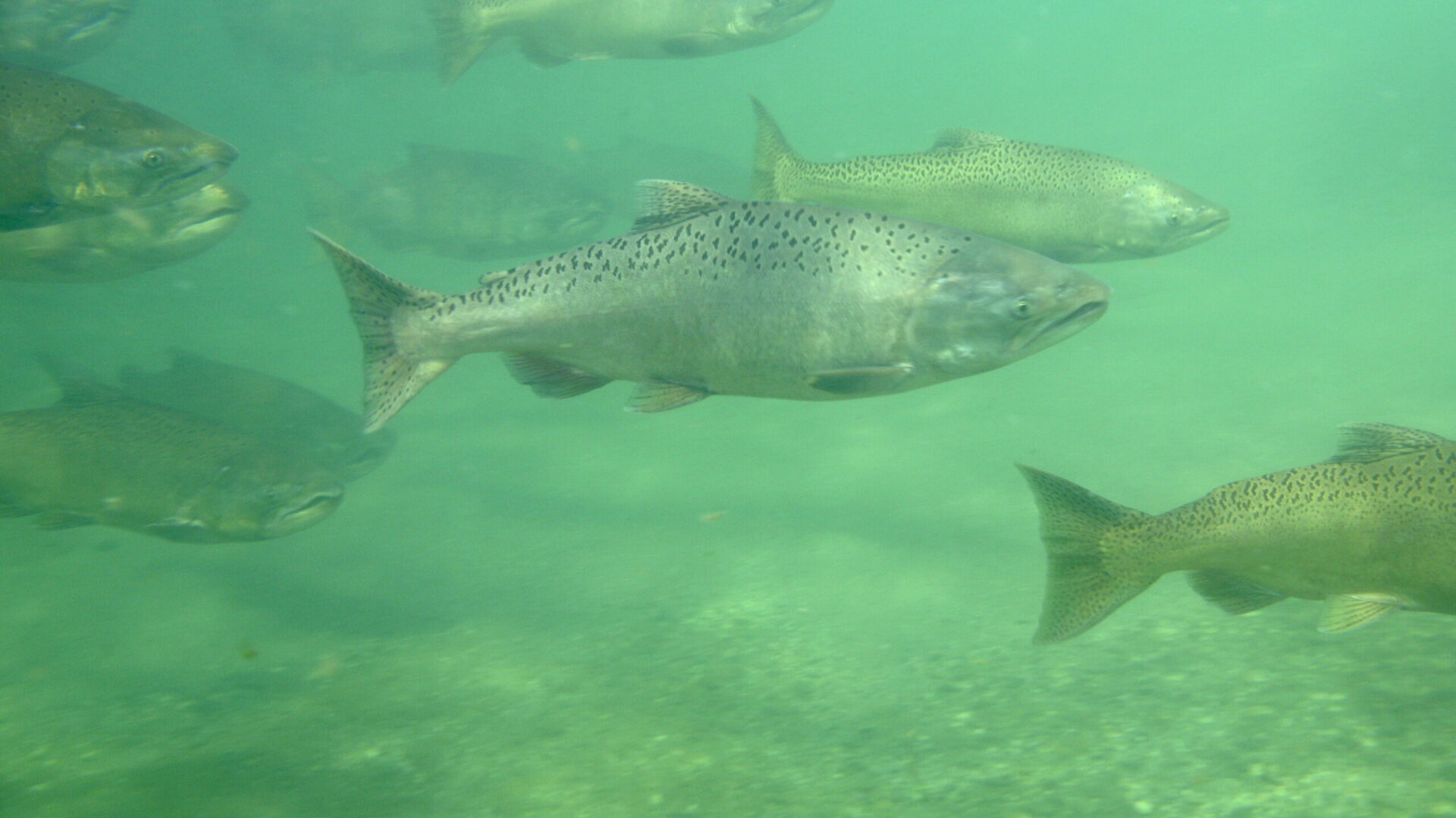Yuba Salmon Update: Spring-run Count is Low

The number of salmon migrating up the Yuba River this last spring is lower than most recent years, according to preliminary counts in the fish ladders at Daguerre Point Dam. A total of 492 salmon migrated through the fish counting station through June 24th according to the latest Field Update from the Yuba Accord River Management Team, The count is low compared to an average of 1116 salmon for the months of March through June over the past five years. That average includes a low of 27 salmon in 2011 when exceptionally high flows delayed migration to later in the year.
The fish passage monitoring facility at Daguerre Point Dam involves cameras and sensors installed in each of the two fish ladders, one on each side of the dam. To learn more about monitoring and evaluation of salmon and steelhead, come to the Fisheries Symposium on the lower Yuba River July 15th, or go to the website for the River Management Team (RMT).
The recent data report reveals some other information about Yuba River salmon. Of all the fish passing through the ladders, 14% had a clipped adipose fin signifying that they were produced in a hatchery. This is lower than the average of 23% ad-clipped proportion of spring-run salmon that have been detected over the monitoring period reported in the Draft Interim Monitoring and Evaluation Report by the Yuba Accord RMT, but still high enough to compromise the population of Yuba River salmon. While Yuba River salmon are an important wild population, it is important to reckon with the fact that strays from the Feather River hatchery make up a significant component of spawning salmon in the Yuba River, and SYRCL is working to find solutions to this problem.
Also evident from the data report is that the south ladder at Daguerre Point Dam has passed only a small fraction of the salmon migrating upstream past the dam. This adds to the long-standing controversy around the antiquated fish ladders built and maintained by the Army Corps of Engineers. SYRCL and other conservation interests continue to push for a full investigation of the impact of the dam and options for improved fish passage and reduced predation. While these topics are not part of the Yuba Accord or any other formal proceeding at this time, SYRCL insists that the Army Corps and those beholden to the dam establish a process of remedy.
Drought conditions will cause flows in the lower Yuba River to be lower than any time since 2001, but not until the end of August and the completion of water transfers from New Bullards Bar Reservoir to demands downstream from the Yuba River. As a result of a groundwater substitution program of the Yuba Accord, local water users will getting paid to let 60,000 acre-feet of water to pass to water users to the South. Flows in September below Daguerre are expected to be approximately 400 cfs. This should be enough to allow passage of salmon to colder water upstream near Englebright Dam, and SYRCL will participate in the monitoring and evaluation of the low flows.
Spring-run Chinook salmon of the Central Valley are listed as threatened with extinction under the Endangered Species Act. The Yuba River is of primary importance in the Central Valley for the recovery of spring-run salmon. Join the Yuba Salmon Now campaign to support and stay informed of SYRCL’s work to restore salmon in the Yuba River watershed.
Did you enjoy this post?
Get new SYRCL articles delivered to your inbox by subscribing to our ENews.


